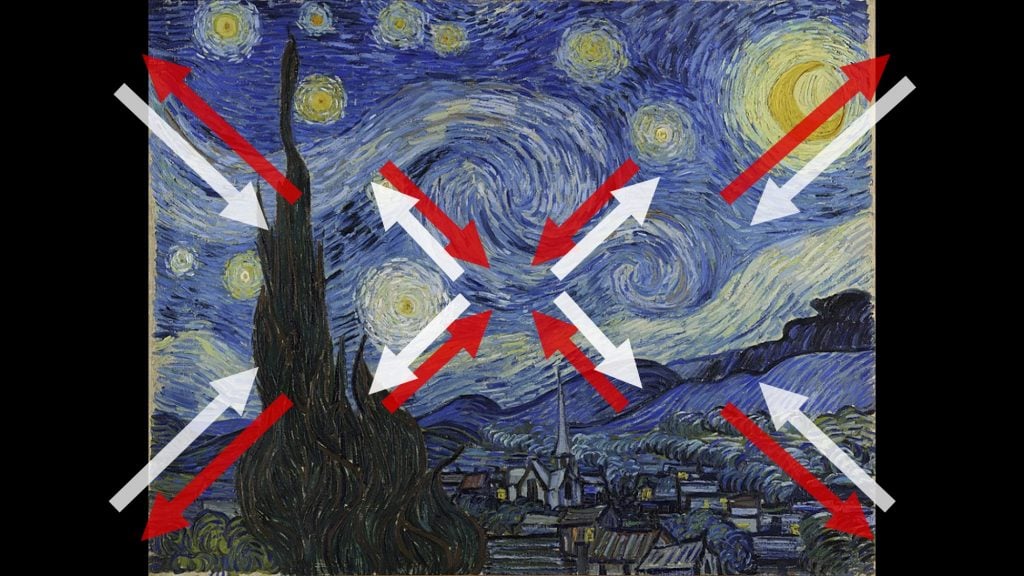Art World
What Is the ‘Haunted Painting Effect’? Here’s a Simple How-To Guide on the Spooky Illusion That Can Make Any Painting Come Alive
It's called "Motion Aftereffect," aka the "Haunted Painting Effect."

It's called "Motion Aftereffect," aka the "Haunted Painting Effect."

Ben Davis

Lately, I’ve been thinking a bit about the “Haunted Painting Effect.”
That’s my own name for a certain kind of optical illusion that periodically surfaces online. The most commonly circulated examples tend to involve Vincent van Gogh’s The Starry Night and a spinning animation—that’s what caught my art-critic eye. Look at the animation long enough and then look at Van Gogh’s painting, and the painting seems to become animated itself, his Post-Impressionist sky seeming to seethe with actual movement.
It’s a cool trick—but the examples I’ve seen didn’t really explain it. It turns out that this particular illusion is pretty well-studied. It’s called “Motion Aftereffect,” or MAE. One version is the “Waterfall Effect,” so named because if you look long enough at a waterfall and then look away, the rocks around the landscape will also seem to move.
The effects can be spooky. And once they understand how the effect works, I think artists and art fans might have a lot of fun with it. So I’ve put together this short video essay on the idea.
Keep in mind that the longer you look at a given pattern of motion, the longer the effect lasts. If you want a more dramatic version of the effect, just spend more time looking at any of these various animated patterns.
Enjoy!
(NOTE: This video contains flickering patterns.)